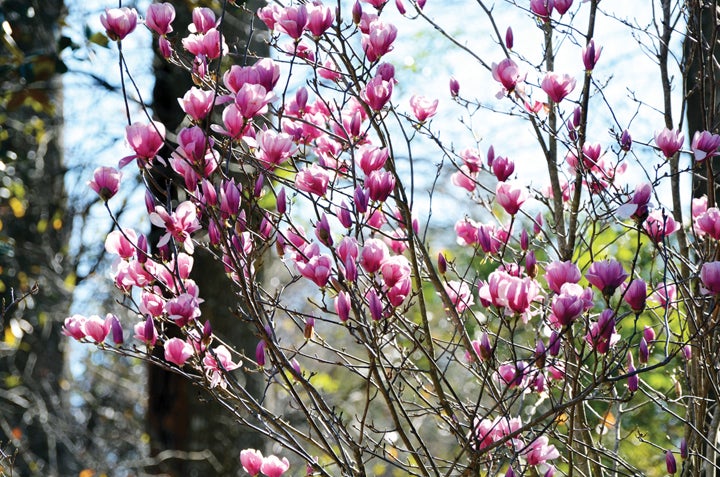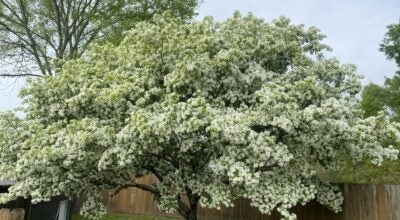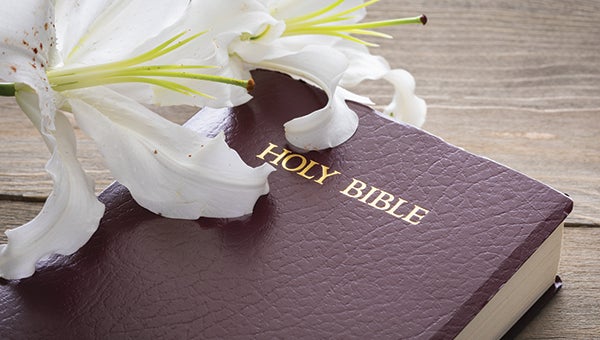Flowering trees add color and beauty to February, March landscapes
Published 1:39 am Wednesday, February 26, 2014
Flowering trees add considerable color and beauty to our landscapes during late winter and early spring. Many of the trees that flower at this time of year can be considered low-maintenance compared to the amount of pleasure we get from them.
The Taiwan flowering cherry (Prunus campanulata) blooms in late January through February in Louisiana. The attractive flowers are vibrant, deep pink and are produced in great abundance before the leaves emerge. This is one of the few flowering cherries that grow and bloom reliably this far south.
The Okame flowering cherry is another type that will grow successfully in Louisiana. It is especially recommended for north Louisiana because it blooms later, and the flowers are less likely to be damaged by a freeze. Pale pink flowers emerge in March or April.
Another Prunus to try is the Japanese flowering apricot. These stunning specimens flower from late January to mid-March, depending on the year and where they are in the state. The best Louisiana variety is Peggy Clarke.
The Oriental magnolia (Magnolia x soulangiana) is one of the most spectacular of the spring-flowering trees because its flowers are so large. Unlike the evergreen Southern magnolia, the Oriental magnolia is deciduous and loses its leaves in winter. Appearing before the foliage in February, the fragrant flowers are tulip-shaped, 4 to 6 inches across and may be flushed pale pink to purple on the outside and white on the inside. Long-lived and reliable, Oriental magnolias grow 15 to 20 feet tall and need a sunny, well-drained location.
The related star magnolia (Magnolia stellata) is smaller, growing 10 to 12 feet tall, and is more shrub-like. The white or pale pink flowers are star-shaped and wonderfully fragrant. Blooming in late January or February before the foliage emerges, the star magnolia is an excellent choice for small gardens.
The native silver bell (Halesia diptera) produces small, four-petaled, white flowers that hang down in large numbers from the branches. The thin leaves allow light to filter through, creating a lovely effect under the tree. Silver bells thrive in Louisiana and, once established, grow rapidly, maturing at about 25 to 30 feet tall. They grow well with light shade or in full sun. A similar tree to the silverbell is the American snowbell (Styrax americanus).
The hawthorns are a wonderful group of nat-ive trees that provide spring bloom as well as fruit for human or wildlife consumption. Growing 15 to 20 feet tall, the parsley hawthorn (Crataegus marshallii) is an excellent choice in patio or small plantings. The clusters of white flowers appear in March or April and are soon followed by the foliage, which looks like flat Italian parsley. The small, red fruit that ripen in fall are relished by mockingbirds. Parsley hawthorn is tolerant of poorly drained soils and grows in full sun to part shade.
The American fringe tree (Chionanthus virginicus) produces clusters of flowers with long, narrow, greenish-white petals that are produced in masses all along the branches. They thrive in full sun to partial shade in well-drained locations.
Another excellent spring-flowering tree is the redbud (Cercis canadensis), which usually blooms in late February or March. Small, pinkish purple, pealike flowers are produced in unbelievable profusion along the branches (and even on the trunk!) before the leaves appear. This habit of blooming before the leaves grow out is fairly common among the spring-flowering trees and really adds to the impact of the flowers.
Redbuds are relatively fast-growing once established and prefer full sun and a well-drained location.
All of these spring-flowering trees are great choices for any Louisiana landscape. See more landscape information on the LSU AgCenter website, www.lsuagcenter.com.






